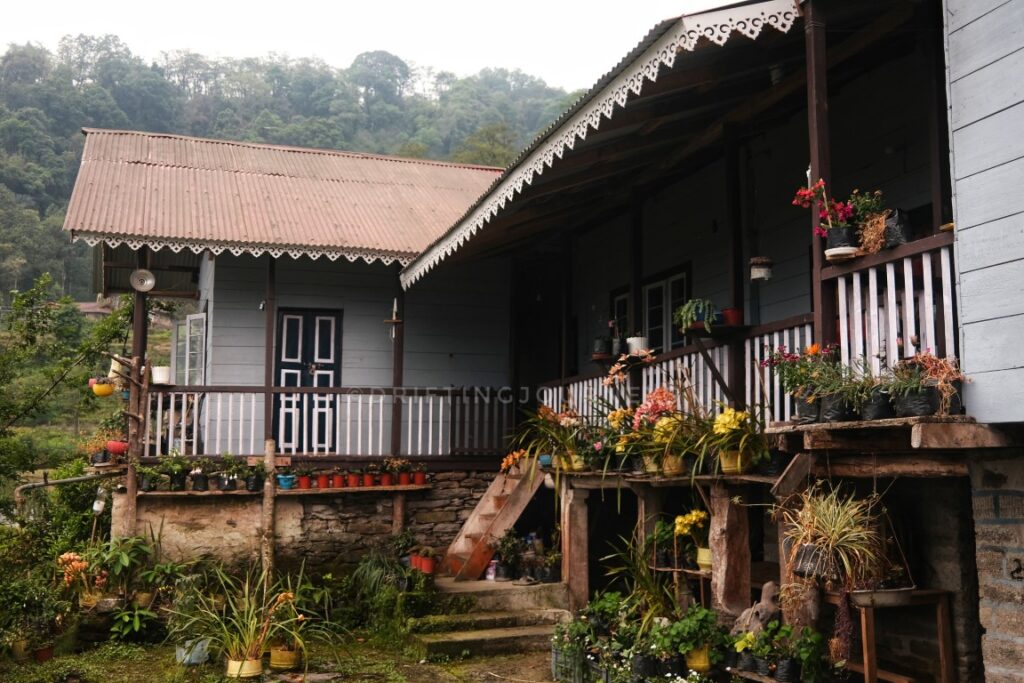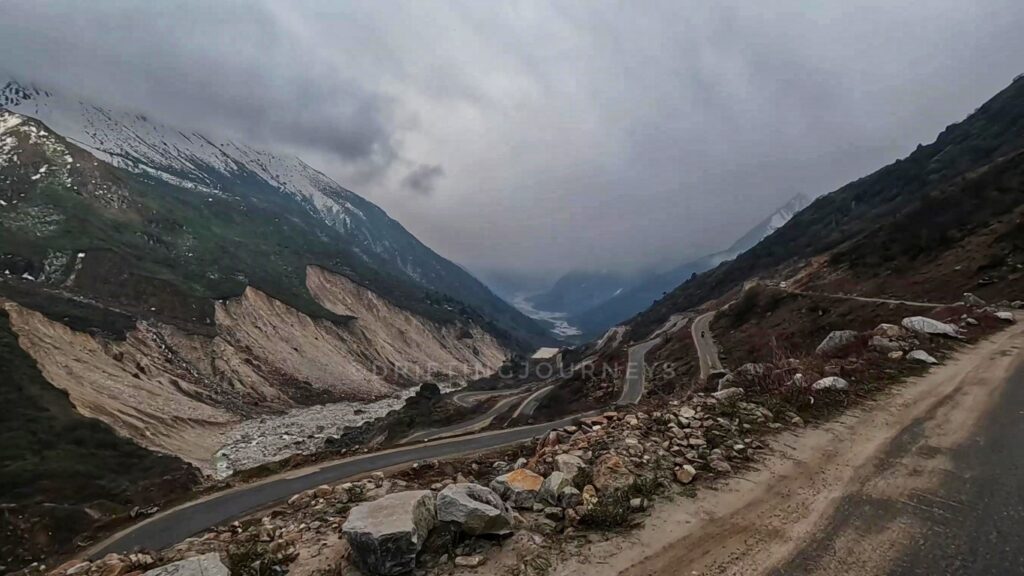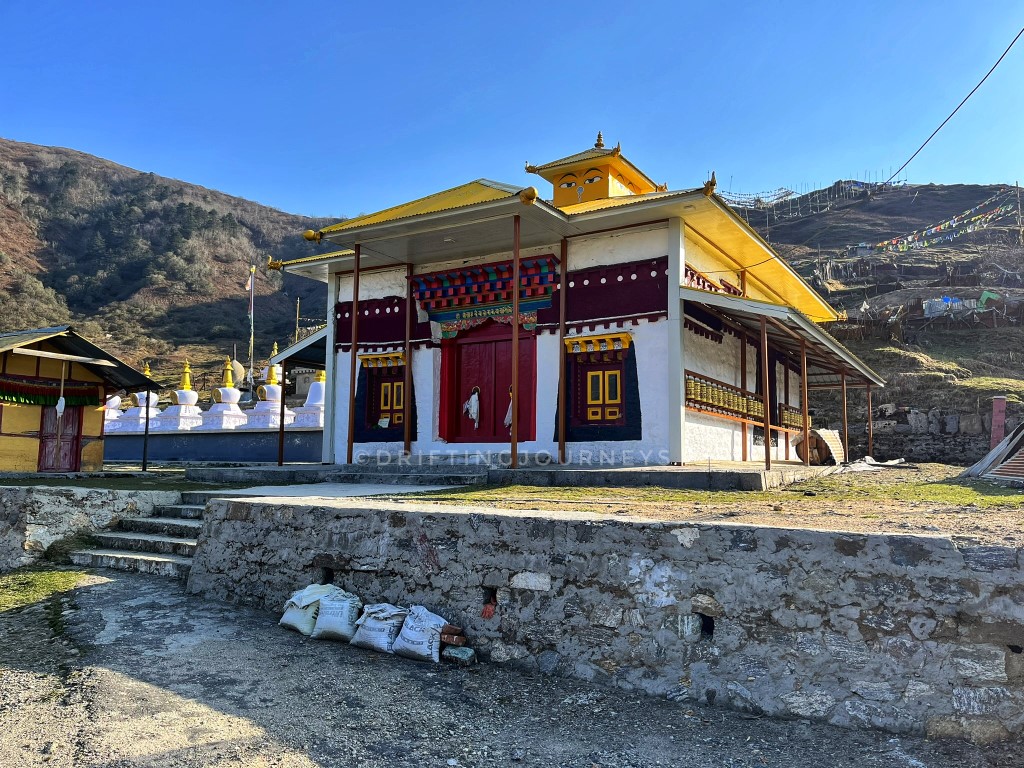Sikkim: A 10-Day Odyssey through the Jewel of the Himalayas
Imagine waking up to the sound of birds chirping, breathing in crisp, fresh air, and gazing at breathtaking mountain views. Welcome to Sikkim, a land of unmatched beauty and enchanting landscapes. Nestled between Nepal and Tibet, Sikkim is one of India’s smallest states but offers a treasure trove of experiences. Whether you seek serenity in nature or crave the thrill of adventure, Sikkim is the perfect destination.

Contents
- Best Time to Visit
- How to Reach
- Itinerary
- Day 1 and 10: Arrival and Departure
- Day 2: Exploring Gangtok
- Day 3: Off-beat Dzongu Valley
- Day 4: Dzongu to Lachung
- Day 5: Exploring Lachung – Yumthang, Zero Point, Sanglaphu Lake
- Day 6: Lachung to Gangtok
- Day 7: Gangtok to Nathang Valley via Tsomgo Lake and Nathula Pass
- Day 8: Nathang – Zuluk – Ravangla
- Day 9: Ravangla – Pelling – Gangtok
- Recommendations
- Personal Reflections
Best Time to Visit
The best times to visit Sikkim are spring (March to May) and early winter (October to December).
Spring in Sikkim is particularly magical. The entire region comes alive with blooming flowers, making it an ideal time for nature walks, treks, and photography. The Rhododendron forests, particularly, are a sight to behold, with hues ranging from deep red to pastel pink. Additionally, the weather is pleasant, with temperatures ranging between 5°C to 25°C, making it comfortable for outdoor activities.

(Rhododendron flowers in full bloom in Lachung)
How to Reach
The closest airport to Gangtok is Bagdogra Airport (IXB), about 123 kilometers away. From the airport, you can hire a taxi to Gangtok. The nearest railway station is New Jalpaiguri Junction (NJP). From NJP, you can hire a private or shared taxi. Private and state-owned buses also operate between NJP and Gangtok.
Note: It’s recommended to reach Bagdogra or NJP by 2:00 PM to ensure you arrive in Gangtok on time. This precaution accounts for potential road closures, traffic, or any unforeseen diversions common on this route.
Itinerary
Day 1 and 10: Arrival and Departure
Spend the first and last day of your trip traveling to and from Gangtok. The drive from Bagdogra or Siliguri to Gangtok takes about 5-6 hours. Enjoy the scenic drive along winding mountain roads and the Teesta River.
(The mighty Teesta river from originates in Sikkim and flows into West Bengal)

Day 2: Exploring Gangtok
Gangtok, the lively capital of Sikkim, offers much more than just hotels and food. It’s a vibrant city filled with colourful monasteries, viewpoints, and waterfalls. Must-visit spots in Gangtok include:- Rumtek Monastery: A significant Buddhist monastery known for its serene ambiance. Located 24 kilometers from Gangtok, Rumtek Monastery is one of the most important seats of the Kagyu sect of Buddhism. The monastery’s architecture is a stunning example of Tibetan designs and is home to a community of monks. The tranquil environment and the sound of monks chanting provide a deeply spiritual experience.

(Image sourced from Google)
- Lingdum Monastery: Another peaceful and beautiful monastery to explore. Lingdum, also known as Ranka Monastery, is newer and less crowded, offering a peaceful environment to meditate or simply enjoy the serenity.

- Rice Valley: Experience the picturesque rice terraces. The terraced fields are a testament to the traditional farming methods that have been practiced here for centuries. During the planting and harvesting seasons, the fields are particularly beautiful, with layers of green and golden hues stretching out before you.

- Ban Jhakri Falls: A beautiful waterfall set in a scenic park. The park surrounding the falls is well-maintained. It’s a great spot for a picnic or a short hike.

(Image sourced from Google)
- Tashi View Point: Offers breathtaking views of the Kanchenjunga mountain range. On a clear day, the view from Tashi View Point is nothing short of spectacular. The sunrise over the mountains is a sight to behold and worth the early morning wake-up call.

(Image sourced from Google)
- Hanuman Tok: A temple with panoramic views of Gangtok and the surrounding mountains. Managed by the Indian Army, Hanuman Tok is located at an altitude of 7,200 feet. The temple is dedicated to Lord Hanuman and is known for its serene ambiance and the stunning views it offers.

(Image sourced from Google)
- Flower Exhibition: Showcases a variety of exotic flowers. Located near the White Hall Complex, the flower exhibition center is a delight for botanists and nature lovers. It features a variety of orchids and other indigenous flowers.

Day 3: Off-beat Dzongu Valley
Dzongu Valley is a hidden gem, often overlooked by tourists. This protected area is home to the Lepcha tribe, the original inhabitants of Sikkim. The Lepchas, known as the “Rongkup” or the children of the Rong, have a unique culture and way of life that they have preserved for generations. The valley offers pristine natural beauty, with lush forests, waterfalls, and traditional Lepcha villages.

Staying in homestays is a fantastic way to connect with the locals and learn about their culture and lifestyle.

On the way, visit Kabi Lungchok, known for a historic treaty between the Lepchas and the Bhutias, and Labrang Monastery for a glimpse into Sikkim’s spiritual side.

(Kabi Lungchok palace)

(Labrang monastery)
Day 4: Dzongu to Lachung
Exploring North Sikkim often includes Lachen and Lachung. While Lachen is recovering from last year’s floods, Lachung is ready for visitors. Due to road damage from Mangan to Lachung, you’ll take an alternate route via Dzongu, offering a thrilling drive with over 42 hairpin bends.
The ascent rewards you with stunning valley views on both sides. The journey winds through scenic mountain roads and quaint villages, immersing you in Sikkim’s rural charm.

In Chungthang, the devastation from the October 2023 floods is evident, with a busted dam and massive rocks marking the landscape.

The army has temporarily restored a damaged bridge, enabling access to Lachung. Despite the destruction, resilient locals are rebuilding their homes, demonstrating their determination and spirit. This journey not only showcases nature’s beauty but also the strength of its people.
Lachung, situated at an altitude of 8,610 feet, is a picturesque village surrounded by apple orchards and rhododendron forests. The journey to Lachung is an adventure in itself, with the road winding through deep gorges and verdant valleys.

In Lachung, the cafés offer a warm and inviting atmosphere where you can relax after the journey. Café Lachung and Dizzy Yak are some amazing spots to enjoy a hot beverage and some local snacks while taking in the stunning views.
Day 5: Exploring Lachung – Yumthang, Zero Point, Sanglaphu Lake
Yumthang Valley
Lachung serves as your gateway to high-altitude experiences. Visit Yumthang Valley at 14,000 feet, a stunning valley surrounded by mountains with the Lachung river cutting through.

Known as the Valley of Flowers, Yumthang is a paradise for nature lovers, especially during the spring when the valley is carpeted with a variety of flowers, including primulas and rhododendrons.

Spend some time here to acclimatize to the altitude before heading to your next destination.

Zero Point
Continue to Zero Point at 15,300 feet for a snow-covered landscape. Zero Point, where the civilian road ends, is often covered in snow even in late spring, offering a true winter wonderland experience.

Amidst the pristine snowscape, tiny shacks offer a cozy retreat, serving snacks, tea, coffee, and even mini pegs of alcohol to warm you up. However, amidst the awe-inspiring beauty, it’s crucial to remain vigilant against altitude sickness. Watch for symptoms like headaches, dizziness, and shortness of breath, ensuring a safe and enjoyable exploration of this majestic summit.
Sanglaphu Lake
Recently opened to the public, Sanglaphu Lake is a pristine glacial lake situated 5 kilometers north of Zero Point, at a breathtaking altitude of 16,600 feet.

(Sanghalphu Lake)
Revered by the locals, this sacred lake can only be reached by 4×4 vehicles and motorcycles due to the rugged terrain and lack of proper roads.

(Some serious off-roading to reach Sanglaphu lake)
The journey, though challenging, is a rewarding adventure, offering stunning views that make every effort worthwhile.
The day trip to these high-altitude destinations is challenging but immensely rewarding. The scenery is beautiful, and the clean mountain air is revitalizing. Ensure you are well-acclimated and hydrated and carry enough warm clothing and snacks for the journey.

Day 6: Lachung to Gangtok
Today, you have two options: either go straight to East Sikkim or head back to Gangtok for a short break. I chose to go back to Gangtok. After the exciting time in Lachung, I felt like a calm evening in Gangtok was just what we needed.
Day 7: Gangtok to Nathang Valley via Tsomgo Lake and Nathula Pass
Tsomgo Lake
Our initial destination is the breathtaking Tsomgo Lake, also referred to as Chhangu Lake.

(Tsomgo lake during Spring)
Nestled at an altitude of approximately 12,400 feet, this glacial lake offers a serene retreat amidst the lofty mountains.
Nearby, a ropeway provides sweeping panoramic vistas, stretching all the way to the Chinese territory on clear days. Take a moment to immerse yourself in the tranquil allure of the lake before embarking on the rest of your journey.
Nathula Pass
Next, we journey to Nathula Pass, perched at 14,400 feet. This mountain pass stands as one of the closest points accessible to the Indo-Chinese border. Here, you’ll catch sight of military bunkers and watchtowers dotting the landscape from both sides.

NOTE: Keep in mind, visiting Nathula requires permits, and it’s open until 1:30 PM. Due to the high altitude and cold temperatures, it’s advisable to limit your stay to about 15 minutes, ensuring a safe and comfortable exploration of this significant site.
Interesting fact: Nathula Pass is part of the ancient Silk Route. For more information, you can visit Sikkim Tourism’s website.
Baba Harbhajan Mandir
Visit the Baba Harbhajan Mandir, a unique shrine dedicated to an ex-army man whose spirit is believed to guide soldiers. The temple, located at a height of 13,123 feet, is maintained by the Indian Army and is surrounded by numerous legends about Baba Harbhajan Singh’s protective spirit.
Landscape of East Sikkim
In East Sikkim, the terrain stands out distinctly from the rest of the state. Here, barren mountains and the proximity to the Indo-Tibet border create a unique ambiance.

(The twin lakes on the way to Nathula pass)

(The road to Dokhlam with the Elephant lake in the foreground)
En route to Nathang Valley, you’ll encounter the path to Dokhlam, an area that garnered attention in recent times due to border tensions between China and India.
Nathang valley
Continuing southwest, you’ll reach the tranquil Nathang Valley, nestled at an elevation of 13,300 feet. This quaint village is encircled by army camps and has been developed to promote tourism.

(The view of the Nathang village)

(Some houses and a temple)
During winter, the valley transforms into a snowy wonderland, perfect for skiing enthusiasts. Accommodations here are limited to homestays, offering travellers an authentic and off-the-beaten-path experience.

In Nathang Valley, you can explore an ancient monastery and a small replica of a Lhasa palace.

(The ancient monastery)

(Replica of the Lhasa palace)
The vast and barren landscape is awe-inspiring, accompanied by the distant sounds of shelling from nearby army camps—rest assured, it’s just soldiers engaging in practice.
To conclude your day, embark on a hike to a mountain peak and witness a breathtaking sunset.

Be prepared for a chilly night, especially if you’re not accustomed to harsh winters. On clear nights, you might even catch a glimpse of the mesmerizing Milky Way stretching across the sky. This day promises adventure and stunning landscapes, offering a unique glimpse into the beauty of East Sikkim.
Day 8: Nathang – Zuluk – Ravangla
After a thrilling night in Nathang, it’s time to journey southward along the ancient Silk Route. The Zuluk loops, part of this historic trade path, offer an exhilarating ride.

While fog often veils the route, clear days unveil mesmerizing views of the serpentine roads from the mountain top. As you navigate these twists and turns, exercise caution.
Descending from Nathang, you’ll traverse through several villages adorned with colourful houses. Beyond Zuluk village, the forest cover resumes, with the road meandering alongside a river flowing deep in the valley. Cutting through mountains cloaked in dense forest, the journey offers picturesque vistas.

Route Directions
From Zuluk, head towards Padamchey, then divert at Rorathang towards Rangpo. Upon reaching NH10, proceed towards Singtam. From Singtam, two routes are available to reach Ravangla:
- Ganju Lama VC Marg: The standard route.
- Temi Tea Estate Route: A scenic alternative passing through the lush Temi Tea Estate.
Temi Tea Estate
Pause at the Temi Tea Estate to relish the pleasant weather and verdant surroundings. Indulge in organic tea at roadside cafes while enjoying the spectacular views.

The onward journey to Ravangla offers rough roads but promises breathtaking scenery.
Upon arrival in Ravangla, the Buddha Park awaits. Admire the colossal statue of Gautam Buddha against the backdrop of Mount Narsing. Spend serene moments here, soaking in the tranquil ambiance and panoramic vistas.


For accommodation, consider a homestay or hotel perched atop the mountain. This affords the best opportunity to behold Mount Narsing in the morning, culminating your journey with a perfect finale.
Day 9: Ravangla – Pelling – Gangtok
Pelling, located at an altitude of 7,200 feet, is known for its magnificent views of the Kanchenjunga range. The Chenrezig Statue, a 137-foot-high statue of Chenrezig, the manifestation of compassion in Buddhism, is a major attraction.


The adjacent skywalk offers a thrilling experience with glass-bottomed sections that provide a bird’s-eye view of the surroundings.
Pemayangtse Monastery, one of the oldest and most important monasteries in Sikkim, is a must-visit. Founded in 1705, the monastery belongs to the Nyingma sect of Tibetan Buddhism and is known for its beautiful architecture and serene ambiance.

(Image sourced from Google)
The Rabdentse Ruins, the remains of the ancient capital of Sikkim, offer a glimpse into the region’s rich history. The ruins are set amidst dense forests and offer panoramic views of the mountains.

(Image sourced from Google)
Enjoy local tea in Pelling’s charming cafes before returning to Gangtok. Pelling’s quaint cafes offer a cozy environment to relax and enjoy local and international cuisine. The town’s laid-back vibe and scenic beauty make it a perfect place to spend a leisurely afternoon.

(Café Kubran, Pelling)

(Their Momos and Chinese food is delicious)
After exploring Pelling, embark on the scenic drive back to Gangtok. Reflect on your incredible experiences in Sikkim—serene lakes, majestic peaks, and vibrant culture—as you return to the capital, cherishing the memories of this enchanting region.
Recommendations
- Travel with Locals: Gain deeper insights into Sikkim’s culture. Hiring local guides not only supports the community but also provides you with authentic information and stories about the places you visit. The locals can take you to hidden gems that are often missed by regular tourists.
- Road Conditions: Expect diversions due to ongoing repairs. The roads in Sikkim, especially in the mountainous regions, are prone to landslides and can be rough in places. It’s advisable to travel in a sturdy vehicle and be prepared for delays.
- Checkpoint Delays: Be prepared for delays, especially in North Sikkim. Ensure you have all necessary permits and identification documents ready. The region’s proximity to international borders means that security checks are frequent.
- Climate Preparedness: Pack rain gear and warm clothing. Sikkim’s weather can be unpredictable, with sudden changes. It’s essential to be prepared for rain and cold, especially in higher altitudes.
- Altitude Awareness: Stay hydrated to prevent AMS. Altitude sickness can affect anyone, regardless of age or fitness level. Drink plenty of water, avoid alcohol, and ascend gradually to allow your body to acclimate.
- Local Cuisine: Enjoy Nepali, Tibetan, and local delicacies. Sikkim’s cuisine is a delightful blend of flavours. Don’t miss out on trying local dishes like Gundruk, Sinki, Chhurpi, and various types of momos.
- Respect Local Customs: Adhere to local customs and rules. Sikkimese people are warm and hospitable, but it’s important to respect their traditions and way of life. Dress modestly, especially when visiting monasteries and other religious sites.
- Motorcycle Exploration: Explore Sikkim’s roads safely on a motorcycle. If you’re an adventure enthusiast, renting a motorcycle can be a great way to explore Sikkim. Ensure you are familiar with traffic rules and ride cautiously, especially on the steep mountain turns. Enjoy the journey safely!
Personal Reflections

During my visit to Sikkim, I found myself deeply immersed in more than just its breathtaking landscapes. Engaging closely with the locals provided me with a profound understanding of their lives, challenges, and the resilient spirit that defines them. Witnessing their strong connection to the land and their unwavering determination to overcome adversity was humbling.
Sikkim’s vulnerability to climate change became unmistakably clear as I journeyed through the region. The area is highly eco-sensitive, with deforestation for new roads, the building of numerous dams, and pollution from tourism damaging its natural beauty. These changes also pose significant risks to the locals.
As you plan your journey, keep in mind the essence of travel – to connect, learn, and grow. Sikkim, with its warm-hearted people and breathtaking landscapes, offers ample opportunities for all three. Pack your bags, set your spirit free, and get ready to be enchanted by the jewel of the Himalayas.
Which part of Sikkim are you most excited to explore? Share your thoughts in the comments below.
